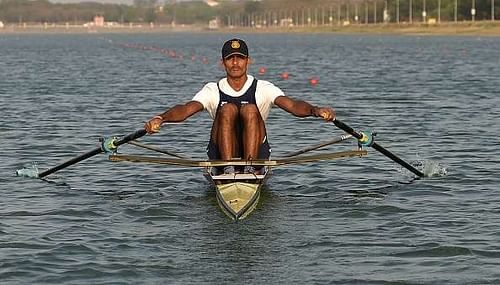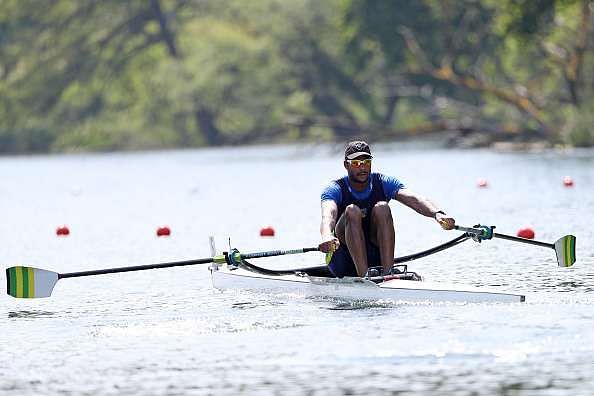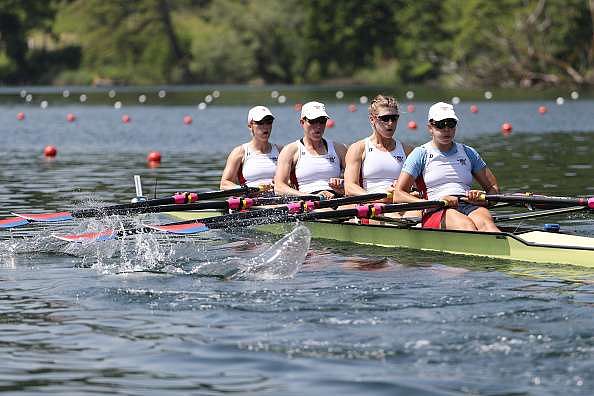
The sport of rowing explained: what does Dattu Bhokanal have to do to win a medal?
India's lone rower at this year's Rio Olympics is Dattu Bhokanal. The 25-year-old from Talegaon in Maharashtra qualified for the global event by winning a silver in the men’s single sculls event at the FISA Asian and Oceania Olympic Qualification Regatta held at Chung Ju in South Korea last year.
India have no team in any of the team rowing events or multiple sculling events pinning all of our hopes on the lone army man. Dattu Bhokanal's event 'single scull' is a form of rowing that involves one person in a single 'scull' who utilises two oars on either side to propel himself forward.
Rowers use the oars – or a single oar in multiple-scull events – by angling the blade at the end of it – which is submerged in water – and repeatedly chalking out an 8-like pattern in the air. This helps in thrusting the scull forward. Rowers have their backs against the finish line and row in an anticlockwise direction to push themselves forward.
Apart from the event Mr Bhokanal is partaking in, the Olympics also recognise five other categories spanning multiple crew member-restrictions.
Sculling Events:
Single Sculls
As explained earlier, a single scull event is all about one rower and his ability to synchronise and efficiently move his scull forward with two oars on either side. The gold medal winner from the 2012 London Olympics was New Zealand's Mahe Drysdale who put in an impressive 6:57.82 to beat Czech Republic's Ondej Synek who clocked a 6:59.47.
Dattu Bhokanal's time that won him the Silver in the 16th Asian Rowing Championships was a 7:07.49 – a time he'll need to drastically improve for him to stay in the Olympics past the first round heats that are to be held on 6th August.
Much like the other formats in the sport, the single scull event is a race between a maximum of six rowers who compete with each other on a straight of water measured at two kilometres. There are a series of heats conducted to determine the quality of the rower.
The top three rowers from each heat progress to the quarterfinal event with the others banished to the repechages. The top two from each of the repechage events qualify for the quarter-finals with the others heading to the E/F semi-finals – the least valuable semi-finals.
In the quarter-final rounds, the top three from each round qualify for the A/B semifinals while the bottom three head into the C/D semifinals. Six semifinals will be held with two for each of A/B, C/D and E/F. For each semifinal race, the top three boats move on to the better of the two finals, while the bottom three boats qualify for the lesser of the two finals possible. For example, a second-place finish in an A/B semifinal would result in advancement to the A final.
The A finals is the medal round and ranking up to sixth in the world. Finals B will be from 7th to 12th and so on.
For Dattu Bhokanal to finish with a medal in the event, he'd have to finish in the top four of his heat, top three of his quarterfinal, and top three of his A/B semifinal and finally top three in the A finals.
Double Sculls
The double sculls event in the Olympics is similar to the single scull event but with two rowers who will still have two oars on either side of them. As the number of rowers on the scull increases, the more the need is to be synchronised. Efficiently moving the scull forward is of tantamount importance to ensure the two of them can keep performing consistently over the two kilometres distance.
The format for the event is much like the single sculls event involving heats, repechages, semifinals and two finals. There are no quarter-finals in the double sculls event. There are three heats held with heat 1 consisting of five pairs while heat 2 and heat 3 competed with four pairs.
The top three in all three heats progress to semi-finals. The rest head into the repechages where the top three also go on to qualify for the semifinals. The top three from each semifinal stand a chance to win a medal by qualifying for the A finals. The rest head into the B finals solely for the sake of world ranking.
Quadruple Sculls
If you thought double sculls needed synchronising, the quadruple sculls event needs even more so. The event requires four rowers on a scull using a pair of aors on either side to push themselves forward. Germany won the gold medal in the last Olympics beating the Croatian quartet by 2.3 seconds – a fairly wide margin in this sport.
The rules for the quadruple sculls event are the same as the two aforementioned ones. The format for the event mirrors the one used for the double sculls event.



